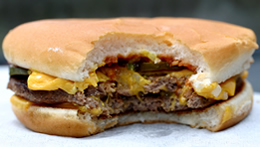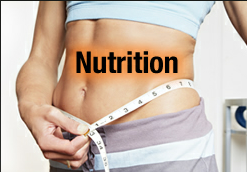Call Us: 617-869-8852
Let’s talk about nutrition now. Most of the time, the first thing that comes to mind is the scary and ugly word…”DIET”. The word “diet” is often associated with feeling hungry, cravings, deprivation, eating only veggies like a bunny, eating very little carbs, no fat…the list goes on and on. The term I like to use instead of diet is “food management”. There are so many diet plans and trends out there, and a diet that works well for one person may not work at all for another. Basically, it boils down to numbers!
Here is a rule for everyone…All of us have a Basal Metabolic Rate (BMR, see chart below), which is the number of calories that you must consume every day in order for your body to function properly. The only thing that you have to do now is to make sure that your caloric intake will help you to achieve your goals. If you want to lose weight or fat, you should take away no less than 20% of calories from your BMR each day. If your goal is to add more muscle, you! should add no more than 15% of calories to your intake each day. (Please note: this is a rough estimate; actual numbers are best determined on an individual basis.)

Of course, “EATING CLEAN” is a major factor in your fit lifestyle. By avoiding sugars (juices, soda, candy some fruits, etc…), “bad carbs” (white bread, pasta, white rice, cakes, etc…), and saturated fat (fried foods, butter, oils, cream, bacon, etc…), you can make big changes in your body in just a matter of weeks. Eating clean means making the right choices, and eating the right quantity and quality of food. You also need to eat the right amounts of carbs, protein, and fats (“YOU SAID FAT?!” — yes, you will need some “good” fats in your life). You should always be aware of what you are putting into your body. Never eat anything already made (preprocessed), including “quick dinner” meals that are in cans, packaged meals, etc. Try to always use fresh vegetables, fruits, and meats. Make sure that you prepare everything that you eat, so that you know exactly what you are putting into your body.
- Protein: chicken breasts, turkey, salmon, tuna, lean steak, eggs (1 yolk per 3 egg whites), tofuFor instance, here are some great food choices that you should have on hand at home:
- Carbs: green beans, broccoli, zucchini, tomatoes, brussel sprouts, asparagus, kale, spinach, sweet potatoes, brown rice, oatmeal, wholegrain Bread: whole wheat bread
- Fruits: cherries, apples, strawberries, pears, peaches, grapefruit, oranges
- Fats: flaxseed, grapeseed, olive and canola oils, almonds, natural peanut butter
Now, think about how many combinations of meals that you can create with all of these choices. Not so bad, right?
 Now you know what you should be putting into your body, but there is a catch…quantity. How much food, and how many meals? Once again, it varies from person to person, depending on their BMR and specific fitness goals, but here are some basic rules to follow. For protein, you should eat about 0.8 to 1.25 grams per pound of body weight. For instance, if you weigh 100 lbs, you should take in 80 to 125 grams of protein per day. Next, calculate your fat intake. Fat should account for no more than 20% of your BMR calories. Finally, the leftover calories account for your carb intake. You might look at the carbs for the day, and say, “Oh my gosh, I’ll be taking in more than 150 grams of carbs per day!” Believe me, it’s more than ok, and you will need them especially if you are working out hard.
Now you know what you should be putting into your body, but there is a catch…quantity. How much food, and how many meals? Once again, it varies from person to person, depending on their BMR and specific fitness goals, but here are some basic rules to follow. For protein, you should eat about 0.8 to 1.25 grams per pound of body weight. For instance, if you weigh 100 lbs, you should take in 80 to 125 grams of protein per day. Next, calculate your fat intake. Fat should account for no more than 20% of your BMR calories. Finally, the leftover calories account for your carb intake. You might look at the carbs for the day, and say, “Oh my gosh, I’ll be taking in more than 150 grams of carbs per day!” Believe me, it’s more than ok, and you will need them especially if you are working out hard.
 Finally, here is the answer to your final question — How many meals? You hear people saying all the time…”I eat so little, and only 2 times per day, but I can’t lose weight!” Well, that is a huge mistake…and here is what your body is thinking…”Ok, I just got this tiny meal which is not enough for me to use as energy, so let me take these calories and store them as fat (energy) until I get my next meal.” You are teaching your body to defend itself from starvation. Meanwhile, you feel weak and dizzy, cruising through the day with tons of coffee and other sources of caffeine (soda, even better, right?), not to mention the cravings, and the fact that these habits are slowing your metabolism to a halt.
Finally, here is the answer to your final question — How many meals? You hear people saying all the time…”I eat so little, and only 2 times per day, but I can’t lose weight!” Well, that is a huge mistake…and here is what your body is thinking…”Ok, I just got this tiny meal which is not enough for me to use as energy, so let me take these calories and store them as fat (energy) until I get my next meal.” You are teaching your body to defend itself from starvation. Meanwhile, you feel weak and dizzy, cruising through the day with tons of coffee and other sources of caffeine (soda, even better, right?), not to mention the cravings, and the fact that these habits are slowing your metabolism to a halt.
It’s true! 5 to 6 meals per day works! Eating consistently throughout the day keeps your blood sugar levels stable. Simple as that! Everything we eat is converted into glucose (sugar), which is our fuel. Whenever that source of sugar drops, or rises too fast, we crave more food (sugar/energy). Eating small portions every 2.5 to 3 hours will keep your blood sugar levels from dropping too low, and will keep you from feeling hungry and tired. Your body will take and use the calories as they come in, which will bring your metabolism to the max and keep you full of energy.
Try to keep the ratio of carbs to protein even during the day, especially in the morning, and before your workout. Drop the carb ratio as it gets closer to dinner time.
Most of us do not have a problem “adding” a new behavior to our lives, such as learning how to play golf, scuba dive, rollerblade, or WORK OUT. But one thing that most of us hate is to “change or replace” a routine that we have been doing for all of our lives – eating! We like our fried foods, burgers, cakes, sweets, etc. Your first reaction might be: “Don’t tell me what to eat – eating is my reward for working out hard, and part of my comfort zone!”.
After you see positive changes in your body and health, you will realize that it is much easier than you thought. It is way worth it! Stay focused! A trainer is only with you for a few hours per week – it is up to you to do your “homework” –managing your behaviors outside of the gym is up to you!
Rolando Amorim
Calorine Intake Guidlines
Activity Levels
| Beginning: | No formal exercise routine (Just starting out) |
| Low Activity: | Aerobic exercise 2 to 3 days per week. |
| Active: | Aerobic exercise 4 to 5 days per week. |
| High Activity: | Aerobic exercise 6 to 7 days per week. |
